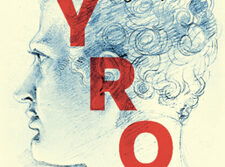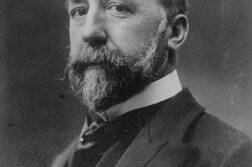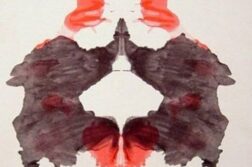HOW LONG is ten years in the life of a black gay male? It’s the difference between 51 (when, because people were always telling me, “You don’t look fifty. I would have thought you were 39, or—maybe—42,” and, on good days, I believed them, I’d go to cruising sites with forty-year-olds, thirty-years-olds, or even some guys in their upper twenties) and 61 (when—because I’ve used one for five years—now I only visit cruising venues where I’m comfortable walking with a cane).
For all you 25- to 35-year-olds who are wondering what you’re going to be doing in twenty or thirty years, I have three such sites here in Philadelphia, in two of which—the Sansom Street Theater and the Forum—I make out regularly, at least once per visit, and in one of which (the Bike Stop, a leather/bear bar up on Quince) I never make out, but people are friendly.
Over the last 25 years now, I’ve written often: “My sex life tends to be at its most rewarding when I have one cherished person as a sexual focus, a range of casual sexual acquaintances and fuck-buddies, and a healthy masturbatory life.” I still go by that. After fourteen years, my main squeeze Dennis and I are going strong. As I’ve suggested, casual sex is also fine. Time and age have played the greatest havoc with (surprise!) my masturbatory life. It’s down to once a week, or once every two—less frequent than the other two areas, rather than more. That’s a change from ten years ago. You figure.
I still don’t use condoms for receptive oral sex with strangers. I’m still HIV-negative, as of my most recent HIV test this past September. (Nor have I contracted any STDs in ten years.) Those oral encounters with strangers have fallen off from circa 175 a year (1990) to circa 75 to 95 a year (2002). And I still don’t believe I can responsibly recommend that anyone else do the same. I have only found three monitored studies of transmission routes, done respectively in 1987, 1990, and 1999. All give a zero percentage for sero-conversions associated with oral sex, but too much contradictory hearsay still flies about (including a lunatic article in a New Yorker last year about 200 prostitutes in Nairobi who were discovered—are you ready for this?—not to have AIDS: which then went on about mysterious and magical proteins in the body, without ever mentioning that the possibility of transmission to women through vaginal intercourse is precisely as contested as the possibility for oral transmission, with the only difference being that no reliable tests have been done to prove or disprove it).
When scientific evidence is as minimal as it is, basing your life or your health on science is still a gamble. I’ve chosen to gamble on science. So far, I’m out ahead. That doesn’t make it any less of a gamble. Interesting, too, is how many doctors and other relatively educated folk have chosen to gamble on something else—much of which they feel is just as “scientific.” But with places like the New Yorker publishing articles of the sort they have, you can understand why. (If the AIDS epidemic had started in the 50’s rather than the 80’s, it would have been a “heterosexual” disease in this country, too, just as it is in Africa today. Think about that a while.)
This past week I was editing my comments from the transcript of a panel discussion I took part in a handful of summers ago at Naropa University, in Boulder, Colorado. Among the eight GLBT participants, we had three G’s, an L, and two T’s. I’m not sure of the orientation of the seventh and eighth members. It’ll be published under the title “Civil Disobediences.” It’s dated August 27, 2001—that is to say, about two weeks before 9/11. I’ve looked at a lot of political discussions over the past two or three years. There’s a difference in this pre-9/11 piece from many I’ve seen that have come after it. I’m curious if, at a later date, someone will be able to describe its nature more accurately.
One thing the last decade has given us is the more and more frequent use of the GLBT designation, for what we once called, however metonymically, the “the gay community.” A couple of months ago, at a party at the Provincetown Inn, where the Lambda Literary Festival was in swing, your editor, Dr. Schneider, asked me if would I consider writing a brief piece on the last ten years and the G&LR’s place in it, since the Review was coming up on its tenth anniversary.
What first hit me was my surprise that the G&LR had been around for only a decade. Though this is just the second time I have written for it, I feel as if I’ve been reading it far more than a simple sixth of my life. That’s a tribute to its intelligence, seriousness, and commitment. I’d be surprised if it didn’t loom larger in the lives of many GLBT readers than its duration suggests.
At the Lambda conference, among the florid murals of fishing activity and town life that enlivened the Inn’s ground-floor corridors, within twenty minutes of arriving I hooked up with two L’s: it was instant simpatico. For the remaining conference days, we hung out a lot. I’ve been researching a novel set in the early 1980’s, in which some pivotal scenes involve a women’s “safe house.” One L—the one who characterized herself as “not a writer”—had worked at such a safe house in those years, and filled a couple of hours with information, personal anecdotes, and general safe house procedures, which will give those sections of my book the ring of truth for people who know those institutions. Their acquaintance was a major pleasure in the conference for me. The fact is, though, I’ve always gotten along a little better with W’s (that’s women) than with M’s (that’s men). I mean, that’s the sort of BGM (black gay male) I am.
Meanwhile, walking around the halls, I ran into a young black L who had co-directed the Fire and Ink Conference of black GLBT writers a year before, which I’d attended in Chicago. We got to talking, and she told me about the recent murder of Shani Baraka, the daughter of black poet Amiri Baraka, originally LeRoi Jones, and Shani’s partner Rayshon Holmes—two black L’s—in Newark, New Jersey. Some years before, Jones’s sister, another black L, had been killed.
I’d heard about none of this. My friend was disturbed that almost nobody else at the conference was aware of it either. Jones himself has been going around giving some very heated talks about the topic of homophobia—a notable change from statements he’s been associated with in the past years. I’m deeply saddened at his loss, and also by the fact it should take such appalling personal pain to make such a change.
At one point, I said to my two new L friends, don’t you think it would be nice if there was a little more L presence, here at the conference? For a moment their faces fell; and they nodded. “But it’s certainly interesting,” one averred.
Meanwhile, out in the hallway, a number of T’s were busily filming away—a kind of mini-seminar within the conference. Would I take part? Sure. (Like I say, that’s the kind of G I am.) So, with camera rolling, I sat down before a fireplace, and, sweeping her forearm up through her diaphanous skirt, an articulate T asked me: “What do you think about the T presence [she said ‘transgendered’]at the conference, here?” to which I could honestly answer, “What T presence? At least on the program.” A good dozen T’s were gathered in the hallway, lurking about and watching the filming, but with one or two exceptions, they weren’t on the panels.
It got me thinking, so that, at the aforementioned party on the next-to-last night, where Richard asked me to write this, I commented to someone else, “Don’t you think—interesting as things were, here—there might have been more black people, more transgendered people, more lesbians and their concerns, actually represented in the programming—as well as all the white gay guys? Oh, hell, even the odd bisexual.” (And, no, maybe because it was my second vodka, I didn’t use the alphabet soup designations.)
To which my interlocutee raised his own vodka glass and said, “Well, everyone’s welcome here. Nobody’s keeping anybody out. I just don’t see why you’re all complaining.” (I hadn’t been aware I was complaining. I thought I was simply making a suggestion.) But that only got me thinking more. So here’s what I think.
If we’re going to have a community—a GLBT community—it’s not a matter of letting people show up, of not keeping them out, of saying it’s okay if they come. It’s a matter of actively valuing, of aggressively welcoming, of materially appreciating them. And, yes, I want that reflected in the programming of conferences such as the Lambda. I had a great time. I’m grateful to the organizers for putting it on. I’m glad I lent my name to it. But it could have been significant in a different way, which would have been good to see. It’s a matter of history—or historical remembrance. Come on, where would our movement be without Christine Jorgenson? Not to mention all those drag shows—all the books by Jan Morris, Patrick Califia, and Kate Bornstein? I’ve learned much too much from them personally to drop them from my reading history, to omit them from the literary history of the GLBT community. Does anyone recall when the Mattachine Review was edited by Carol Lee Haine (a strapping young bull dyke at the time) with her monthly column, “Move Over, Boys”? It was a hoot.
The men and women who basically thought of themselves as straight, or who weren’t sure what they were but who were willing to experiment—and many of whom are still out there experimenting—gave the rest of us an incredible amount. In exactly the way Gayatri Chakravorty Spivak intended when she asked her famous question—”Can the subaltern speak?”—frequently I wonder, can the cannot speak? That is to say, neither the subaltern nor the bisexual can be heard within the current configuration of social discourses that make sense out of language today. A Lambda Literary Festival panel would have been a wonderful place to begin to tear away that silence, with sharp citations from fiction and nonfiction both of the past century and of today.
When the letters GLBT call up all the crossings and the permeability of the boundaries between them, they’re doing their best job. (Who would I/you be without the one or two times, or the one or two thousand times, we tried straight sex, or the one or two times, or the one or two thousand times, we thought about trying it, whatever decision we arrived at?) Their juxtaposition must not become a reification of those very artificial boundaries. Think of the social situations that, on the margins of society, cross among them regularly. That is our community ground. That’s the history we need—the experiences we must have to go and make history and literature from—if we are to be a community that can appreciate the myriad individuals and types of individuals who form it.
And, yes, I’m curious about the next ten years.
— Philadelphia, November 2003
Samuel R. Delany is a novelist and critic (two recent books are The Mad Man and Times Square Red, Times Square Blue) who teaches at Temple University.





